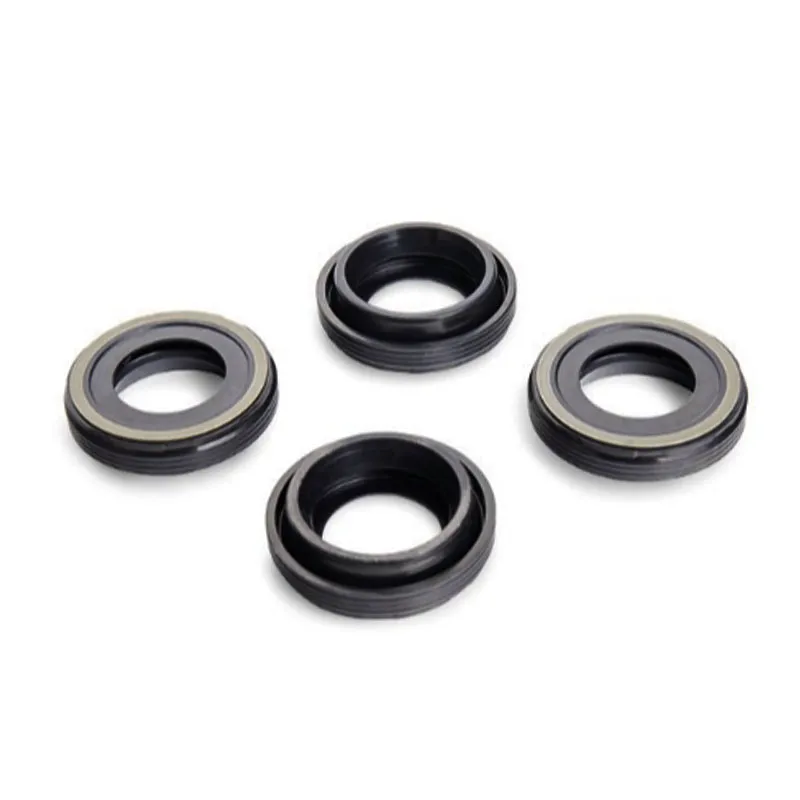oil seal steering rack
Understanding Oil Seal for Steering Rack An Essential Component of Your Vehicle's Steering System
The steering system in any vehicle is a critical component that ensures safe and precise handling. Among the many parts that make up this complex system, the oil seal for the steering rack plays a pivotal role that often goes unnoticed until issues arise. In this article, we will delve into what an oil seal is, its function, why it’s important, and how to maintain it for optimal performance.
What is an Oil Seal?
An oil seal, also known as a fluid seal or shaft seal, is a mechanical component designed to prevent the leakage of lubricants such as oil or grease, while also keeping out contaminants like dirt and moisture. In the context of the steering rack, the oil seal ensures that the hydraulic fluid essential for power steering systems remains contained, allowing the steering mechanism to function smoothly.
The Role of the Oil Seal in the Steering Rack
The steering rack operates by converting the rotation of the steering wheel into lateral movement of the wheels. This mechanical operation typically involves hydraulic fluid, which enhances the ease of steering. The oil seal is crucial in maintaining the integrity of this hydraulic fluid.
When the steering wheel is turned, pressure is exerted on the fluid, which in turn facilitates the movement of the steering components. Without a functional oil seal, the hydraulic fluid could leak out, leading to a lack of assistance in steering, resulting in a stiff and unresponsive driving experience. This is not only frustrating for the driver but also poses significant safety risks on the road.
Importance of Oil Seals in Vehicle Maintenance
Regular maintenance of vehicle components, including oil seals, is essential for long-term reliability and performance. Here are several reasons why the oil seal should not be overlooked
oil seal steering rack

1. Prevention of Fluid Leaks A damaged or worn oil seal can lead to hydraulic fluid leaks. This not only affects steering performance but can also lead to more extensive damage to the steering rack and other related components.
2. Contamination Control Oil seals keep dust, dirt, and moisture from entering the steering rack. Contamination can cause wear and tear on the internal components, leading to premature failure.
3. Cost-Efficiency Addressing oil seal issues promptly can prevent more costly repairs down the line. Replacing a worn-out seal is significantly cheaper than repairing or replacing the entire steering rack.
4. Safety Assurance A well-maintained steering system is crucial for vehicle handling and overall safety. A malfunctioning steering rack due to seal failure can lead to steering failure, which is dangerous while driving.
Signs of a Failing Oil Seal
Awareness of potential issues with the oil seal is vital for vehicle owners. Here are some common signs that may indicate a failing seal
- Fluid Leaks Puddles of hydraulic fluid under the vehicle are a clear indicator of a seal issue. - Difficulty Steering Increased effort required to steer the vehicle could mean low fluid levels due to leaks. - Noise Unusual whining or grinding noises when turning the steering wheel can indicate that the steering rack is not functioning properly.
Conclusion
The oil seal of the steering rack is a small but mighty component that plays a vital role in the performance and safety of a vehicle. Regular inspections and maintenance can ensure that this component functions correctly, enhancing the driving experience and prolonging the life of the steering system. By understanding the importance of oil seals, vehicle owners can take proactive steps to address any issues promptly, ensuring they can navigate the roads safely and confidently. Remember, a well-maintained steering system not only makes driving a pleasure but also keeps you and your passengers safe on every journey.
-
Understanding Automotive Oil Seals: Essential Components for Engine and Shaft Protection
News Jul.30,2025
-
The Importance of Heavy Duty Seals in Industrial and Residential Applications
News Jul.30,2025
-
Exploring Industrial Oil Seals: From Felt Oil Seals to TTO and CFW Solutions
News Jul.30,2025
-
Essential Guide to Oil Seals: From Radial to Metal-Cased Seals for Industrial Reliability
News Jul.30,2025
-
Choosing the Right Oil Seals and Gaskets for Industrial and Automotive Applications
News Jul.30,2025
-
Cassette Seals: Durable Sealing Solutions for Harsh Environments
News Jul.30,2025
-
Understanding the Front Main Engine Seal: Purpose, Maintenance, and Installation
News Jul.29,2025
Products categories















